Hundreds of US flights cancelled as regulator orders cuts to air traffic

The Federal Aviation Administration is cutting air traffic by 10 percent due to a shortage of air traffic controllers. Hundreds of flights across the US have been cancelled following an order from the Federal Aviation Administration (FAA) to temporarily cut air traffic by 10 percent at the country’s 40 largest airports to maintain safety amid a shortage of air traffic controllers due to the government shutdown. More than 790 flights scheduled for Friday were cut from airline schedules, according to FlightAware, a website that tracks flight disruptions. Recommended Stories list of 4 itemsend of list That number, already four times higher than Thursday’s daily total of cancellations, was likely to keep climbing, while almost 500 have been cancelled for Saturday so far, according to the website. The FAA issued its order on Thursday in response to the growing number of absences by air traffic controllers amid the record-breaking US government shutdown, as Republicans and Democrats remain locked in a standoff in Congress over legislation to fund government services. “Since the beginning of the shutdown, controllers have been working without pay,” the FAA order said. “This has resulted in increased reports of strain on the system from both pilots and air traffic controllers. This past weekend, there were 2,740 delays at various airports,” it said. US Transportation Secretary Sean Duffy said the decision to cancel flights was a proactive safety decision rather than a political measure as the shutdown enters its 38th day on Friday. “My department has many responsibilities, but our number one job is safety. This isn’t about politics – it’s about assessing the data and alleviating building risk in the system as controllers continue to work without pay,” Duffy said. Advertisement “It’s safe to fly today, and it will continue to be safe to fly next week because of the proactive actions we are taking,” he said. .@USDOT has many responsibilities, but our number one job is safety. This isn’t about politics – it’s about assessing the data and alleviating building risk in the system as controllers continue working without pay. It’s safe to fly today, tomorrow, and the day after because… pic.twitter.com/YRrq5sdy4T — Secretary Sean Duffy (@SecDuffy) November 7, 2025 The FAA’s phased-in cuts to air traffic over the next week will see a 4 percent reduction in air traffic on Friday, and will end with 10 percent by November 14. The FAA’s order also specifies that airlines do not need to cut international flights, although this decision will be left up to their discretion. Impacted airports include Atlanta’s Hartsfield-Jackson, Dallas-Fort Worth, Denver, Chicago O’Hare, and New York’s John F Kennedy international airports. FAA Administrator Bryan Bedford said his department would not hesitate to take “further action”, suggesting further cuts to flights could be made down the road. The FAA decision puts renewed pressure on Senate Democrats, who are blocking a government spending bill over healthcare spending, as the US is preparing for its busiest travel days of the year at the end of November. The FAA employed just over 14,000 air traffic controllers in fiscal year 2024, according to its website. They are among the 730,000 “essential” federal employees who have been working without pay for the past five weeks, while another 670,000 have been furloughed, according to the Washington, DC-based Bipartisan Policy Center. Adblock test (Why?)
Philippines reeling from deadly floods triggered by Typhoon Kalmaegi
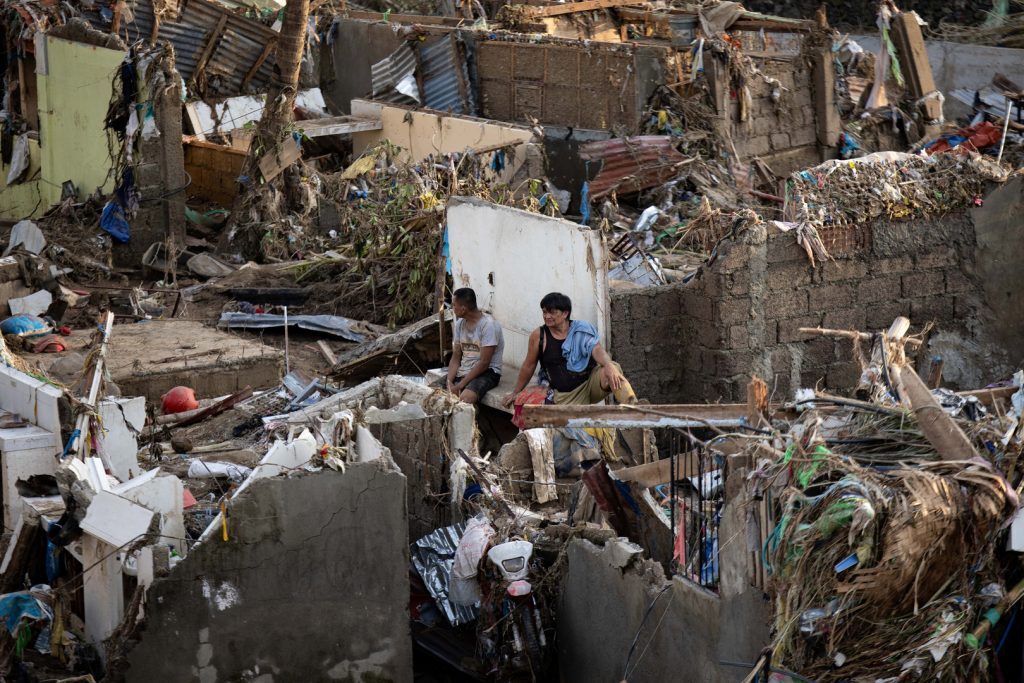
NewsFeed Heavy flooding in Talisay City, Cebu has destroyed homes after Typhoon Kalmaegi dumped a month’s worth of rain. One person died in a low-income area that evacuated early, while dozens may be trapped in a nearby subdivision where residents did not leave. Al Jazeera’s Barnaby Lo is there. Published On 6 Nov 20256 Nov 2025 Click here to share on social media share2 Share Adblock test (Why?)
MAMDANI’S WIN: WHAT ARE HIS CRITICS SAYING?
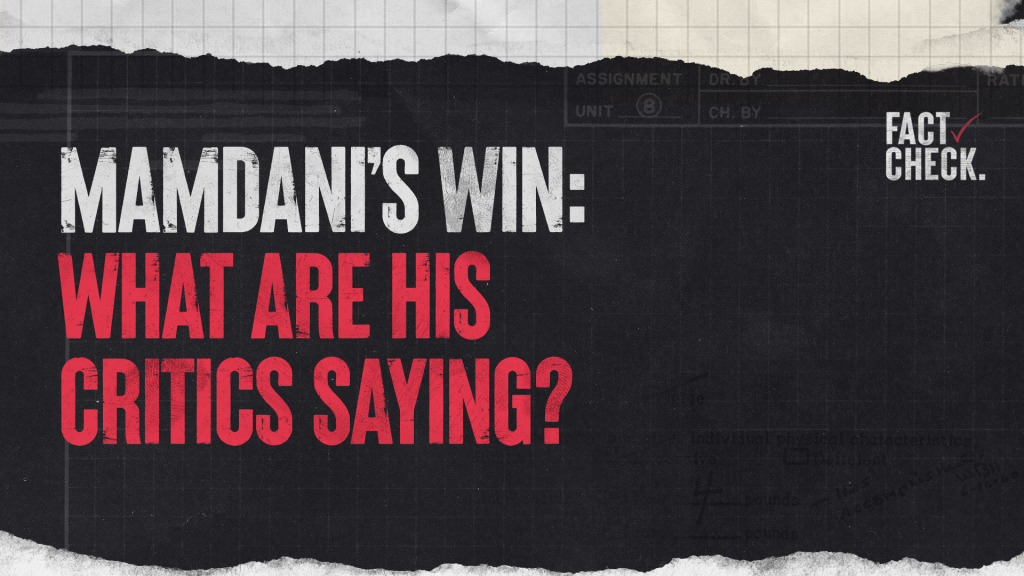
Zohran Mamdani’s landmark win in the NYC mayoral race marks a shift – and ignites false claims on communism, election fraud & city funding. Zohran Mamdani’s historic win as New York City’s first Muslim and first South Asian mayor is being hailed as a turning point for progressives. But it’s also sparked false claims about communism, ballot rigging, and federal funding cuts. Jillian Wolf checks the facts. Subscribe to our channel: http://bit.ly/AJSubscribeFollow us on X : https://twitter.com/AJEnglishFind us on Facebook: https://www.facebook.com/aljazeeraCheck our website: http://www.aljazeera.com/Check out our Instagram page: https://www.instagram.com/aljazeeraenglish/Download AJE Mobile App: https://aje.io/AJEMobile #aljazeera#aljazeeraenglish#aljazeeranewslive Published On 6 Nov 20256 Nov 2025 Click here to share on social media share2 Share Adblock test (Why?)
UN says 2025 to be among three hottest years on record
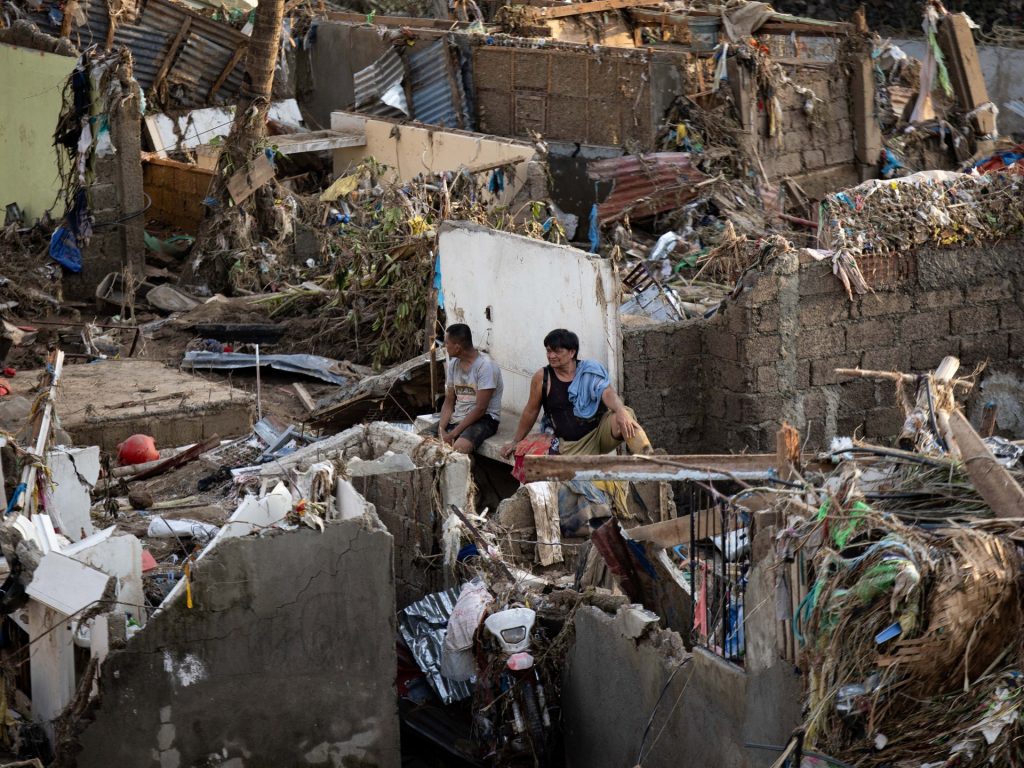
This year is set to be among the hottest on record, sinking the world even deeper into the climate crisis and threatening “irreversible damage,” the United Nations says in a new report. Years 2023, 2024 and 2025 are set to be the hottest years ever recorded, with this year on track to be the second or third hottest ever in 176 years of record keeping, the World Meteorological Organization (WMO) said in the report released on Thursday in advance of next week’s COP30 UN climate summit in Brazil. Recommended Stories list of 3 itemsend of list The UN report offered some stark observations, including warnings that concentrations of greenhouse gases have grown to new record highs, locking in more heat for the future, while the past 11 years, 2015 to 2025, will individually have been the 11 warmest years. Together, these developments make “it clear that it will be virtually impossible to limit global warming to 1.5C [2.7F] in the next few years,” WMO chief Celeste Saulo said in a statement, referring to the 2015 Paris climate accords. The legally binding pact limiting greenhouse gas emissions aimed to provide the world a roadmap for breaking away from fossil fuels that have powered the global economy since the Industrial Revolution and looked to limit global warming to well below 2C (3.6F) above pre-industrial levels, and to 1.5C if possible. But the world has fallen short of its Paris obligations, with the WMO now saying limiting global heating to the goals of the 2015 agreement is virtually impossible. “This unprecedented streak of high temperatures, combined with last year’s record increase in greenhouse gas levels, makes it clear that it will be virtually impossible to limit global warming to 1.5C in the next few years without temporarily overshooting this target,” Saulo said. “But the science is equally clear that it’s still entirely possible and essential to bring temperatures back down to 1.5C by the end of the century.” Advertisement In the report, the WMO said the mean near-surface temperature — about 2 metres (6 feet) above the ground — during the first eight months of this year stood at 1.42C (2.5F) above the pre-industrial average. At the same time, concentrations of heat-trapping greenhouse gases in the atmosphere and ocean heat content continued to rise this year, up from 2024’s already record levels. In its annual report on Tuesday, the UN Environment Programme also confirmed that emissions of greenhouse gases increased by a further 2.3 percent last year, an increase driven by India, followed by China, Russia and Indonesia. UN chief Antonio Guterres called the inability to limit the rise in global temperatures a “moral failure” on Thursday at the opening of a leaders’ summit in Brazil before COP30. “Each year above 1.5 degrees will hammer economies, deepen inequalities and inflict irreversible damage. We must act now, at great speed and scale, to make the overshoot as small, as short, and as safe as possible – and bring temperatures back below 1.5C before the end of the century,” Guterres said. ‘Significant advances’ The WMO said the impact of temperature rises can be seen in the Arctic sea ice extent, which, after the winter freeze this year, was the lowest ever recorded. The Antarctic sea ice extent, meanwhile, tracked well below average throughout the year, it said. The UN agency also highlighted numerous weather and climate-related extreme events during the first eight months of 2025, from devastating flooding to brutal heat and wildfires, with “cascading impacts on lives, livelihoods and food systems”. In this context, the WMO hailed “significant advances” in multi-hazard early warning systems, which it stressed were “more crucial than ever”. Since 2015, it said, the number of countries reporting such systems had more than doubled, from 56 to 119. It hailed in particular progress among the world’s least developed countries and small island developing states, which showed a 5 percent rise in access in the past year alone. However, it lamented that 40 percent of the world’s countries still have no such early warning systems. “Urgent action is needed to close these remaining gaps,” it said. [embedded content] Adblock test (Why?)
Death toll from Kentucky UPS plane crash rises to 12, black box recovered
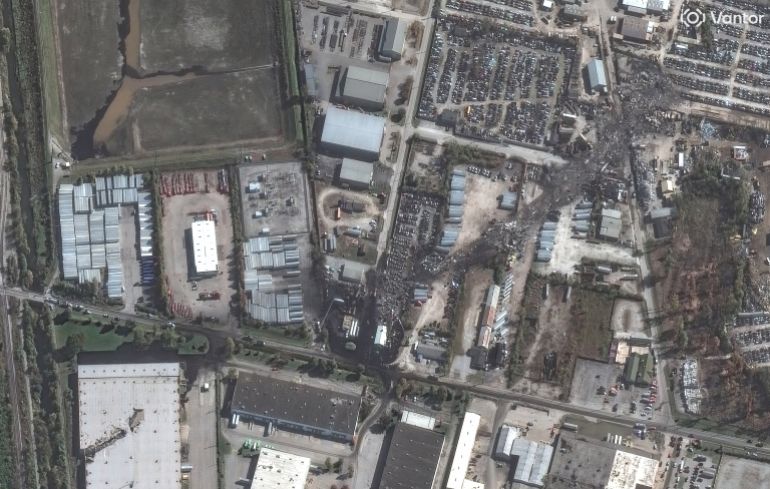
Airport CCTV footage shows the UPS cargo plane’s left engine fell off during takeoff, according to investigators. Published On 6 Nov 20256 Nov 2025 Click here to share on social media share2 Share Federal investigators say they have recovered the flight recorder from the wreckage of a UPS cargo plane that crashed in Louisville, Kentucky, killing at least 12 people. UPS Flight 2976 crashed shortly after takeoff on Tuesday as it departed from Louisville’s Muhammad Ali airport bound for Honolulu, Hawaii. Recommended Stories list of 4 itemsend of list CCTV footage from the airport showed that the plane’s “left engine detaching from the wing during the takeoff roll” before it caught fire, according to National Transportation Safety Board member Todd Inman. “After being cleared for takeoff, a large plume of fire in the area of the left wing occurred during the takeoff roll. The plane lifted off and gained enough altitude to clear the fence at the end of runway 17R,” Inman said at a news conference on Wednesday. The NTSB is an independent US government agency that investigates all civilian plane crashes alongside the Federal Aviation Administration (FAA). Inman said investigators found the plane’s engine on the airfield, but he did not explain how or why it may have detached from the 31-year-old McDonnell Douglas MD-11 wide-body aircraft during takeoff or how the plane’s wing caught fire. A satellite image shows the crash site of a UPS cargo plane at Muhammad Ali international airport in Louisville, Kentucky, US, on November 5, 2025 [Handout/Satellite image ©2025 Vantor via Reuters] Authorities have also recovered the plane’s data recorder and cockpit voice recorder, which have been sent to the lab for processing, he said. It will be months, however, before the investigation concludes. Advertisement Flight 2976 hit several buildings near the airport as it crashed, leaving an 800-metre trail of fire and destruction, according to authorities. Louisville Mayor Craig Greenberg told local news outlet WHAS-TV on Wednesday that 12 people were confirmed dead, while 15 people from the nearby area have been reported missing. “We believe that three of [confirmed fatalities] are likely the crew, and nine others, all of whom those nine are unidentified at this time,” Greenberg said. Kentucky Governor Andy Beshear earlier told a news conference that the deaths had risen to 11, but said he expected it “to reach 12 possibly by the end of the day”. Among the buildings hit by the plane were a petroleum recycling company and an auto parts company, but it missed hitting a nearby Ford Motor factory and a convention centre, Beshear said. “I’ve walked the line of an F4 tornado through my dad’s hometown. I’ve seen towns hit by flooding we’d only describe as biblical. What this scene is is violent,” Beshear told the media. “Where the initial explosion happened, you have significant damage. And then, like a lot of these disasters, just five or six feet [1.5 to 1.8 metres] away, not even the paint disturbed on another vehicle.” UPS said Wednesday that it will soon reopen its facility at Louisville airport, after suspending operations following the accident, according to the Reuters news agency. The airport is home to UPS Worldport, a global distribution centre that processes millions of packages each day and sees upwards of 300 daily cargo flights, according to the agency. Adblock test (Why?)
Man City’s Foden scores two goals in win over Dortmund in Champions League
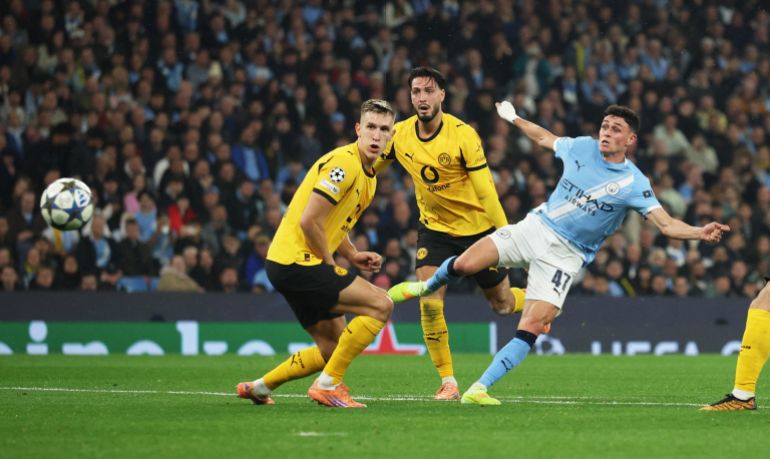
Phil Foden’s dazzling double against Borussia Dortmund kept Manchester City unbeaten in UEFA Champions League after four matches. By News Agencies Published On 6 Nov 20256 Nov 2025 Click here to share on social media share2 Share Phil Foden sent an emphatic reminder to England’s head coach Thomas Tuchel with two brilliantly taken goals in Manchester City’s 4-1 win over Borussia Dortmund in the Champions League on Wednesday. “He is back,” City manager Pep Guardiola said. “He is a special player.” Recommended Stories list of 3 itemsend of list Tuchel will name his latest England squad this week after overlooking Foden so far this season, and with time running out before next year’s World Cup. But the City forward strengthened his case for a recall with an inspired performance against Dortmund. He scored in each half at the Etihad Stadium, with star striker Erling Haaland smashing home his 27th of the season in between. Substitute Rayan Cherki got the other after Waldemar Anton scored for Dortmund. Tuchel is set to announce his squad on Friday for the final World Cup qualifiers against Serbia and Albania, with England having already secured qualification. Foden has rediscovered some of his best form this season after enduring a frustrating campaign last term as City relinquished the Premier League title. His goals on Tuesday – both swept low into the bottom corner – took his tally on the season to four and could have come at just the right time to capture Tuchel’s attention. “There’s no person in this country or around the world that doesn’t know his quality and ability, but England is so lucky to have this amount of good players,” Guardiola said. “In his position there are a lot, and that’s why he has to push himself to be better and better and better.” Foden’s omission from England’s four games this season has been a talking point, with players like Eberechi Eze, Marcus Rashford and Anthony Gordon all adding to the competition for places. Advertisement Despite being widely regarded as one of the most gifted English players of his generation, Foden is still to consistently perform for England. And it appears he is yet to convince Tuchel after being given chances in the German’s first games in charge earlier this season. “Thomas is so smart and wise and knows exactly what the team needs,” Guardiola said. “I think Thomas knows perfectly [about] Phil. What Phil wants to do is play better and better and better.” Foden, right, scores Manchester City’s third goal in the 57th minute [Phil Noble/Reuters] Haaland achieves new goal record Haaland set another scoring benchmark in the Champions League after finding the back of the net for the fifth consecutive game for City in European club football’s elite club tournament. According to City, he is the first player to achieve that feat with three different teams, having previously done so with former clubs RB Salzburg and Dortmund. His latest goal – a powerfully struck effort from close range – was his 54th in 52 games in the Champions League. Lionel Messi has the record for reaching 60 goals in the fewest number of games, at 80. Haaland looks certain to beat that – possibly before the league phase of this year’s tournament is completed. Rodri didn’t even make the bench after returning from a hamstring injury against Bournemouth last weekend. Guardiola said City was being cautious about the Spain international, but his absence raises doubts over whether he will be available for the league clash against Liverpool on Sunday. Rodri missed the majority of last season with an ACL injury, and his contribution has been limited this term. Manchester City’s Erling Haaland, right, scores their second goal as Borussia Dortmund’s Gregor Kobel attempts to make a save [Jason Cairnduff/Action Images via Reuters] Adblock test (Why?)
Typhoon Kalmaegi bears down on Vietnam after 114 killed in the Philippines
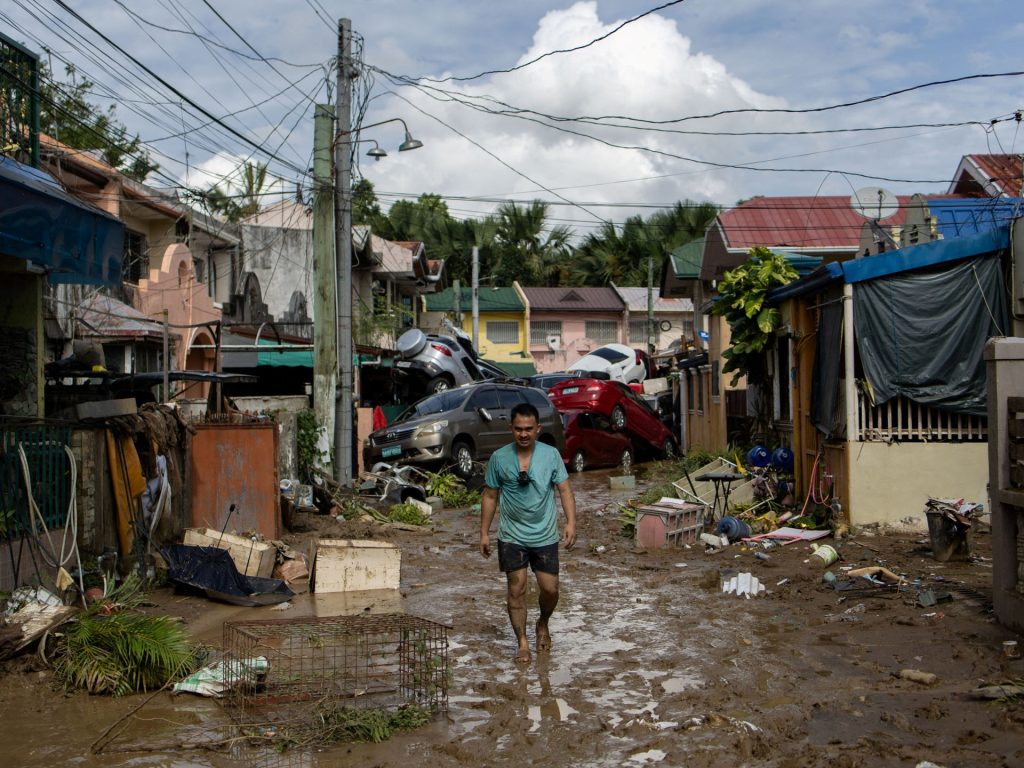
Meteorologists have warned that the typhoon has regained strength as it barrels towards Vietnam’s central regions. The Philippines’ disaster agency has confirmed that at least 114 people have been killed by Typhoon Kalmaegi, with another 127 people still missing, as President Ferdinand Marcos Jr declared a state of emergency and warned of another incoming super typhoon. The worst may also be yet to come with Kalmaegi, as meteorologists with the United States military’s Joint Typhoon Warning Center (JTWC) reported that the storm had regained strength as it now bears down on Vietnam’s central regions. Recommended Stories list of 3 itemsend of list In its most recent alert on Thursday morning at 10am local time in Vietnam (03:00 GMT), the JTWC said that Kalmaegi is “barrelling towards the Vietnamese coast and reaching peak intensity”. Upgrading the storm to Category 4, the JTWC said “Typhoon Kalmaegi will continue rapid progress … and slam into the Vietnamese coast” just north of the city of Quy Nhon in central Vietnam. The typhoon, named Tino locally, devastated large areas of the Philippines as it made landfall in eight areas in the centre of the country on Tuesday, in what is officially the deadliest natural disaster to hit the Southeast Asian archipelago nation this year. Scenes of widespread destruction have begun to emerge from the hardest-hit Philippine province of Cebu, from where the storm receded on Wednesday. Many of the more than 200,000 people who were evacuated have returned to find their homes destroyed, vehicles overturned, and streets blocked with piles of debris. The arduous cleanup effort has begun, with communities scraping mud from their homes and removing large pieces of debris from the streets. Advertisement “The challenge now is debris clearing,” Raffy Alejandro, a senior civil defence official, told local radio news outlet DZBB. “These need to be cleared immediately, not only to account for the missing who may be among the debris or may have reached safe areas but also to allow relief operations to move forward,” he said. Talking to news media following his meeting with disaster-response officials, President Marcos described the storm as a “national calamity”. He said declaring a national emergency will give the government “quicker access to some of the emergency funds” and prevent food hoarding and overpricing. Marcos also warned of another storm approaching the northern Philippines – known internationally as Typhoon Fung-wong, and locally as Uwan – which he said “could be even stronger” than Kalmaegi. The Philippine Atmospheric, Geophysical, and Astronomical Services Administration (PAGASA) said it expects Fung-wong to develop into a super typhoon by Saturday. PAGASA said it could enter the Philippine Area of Responsibility late on Friday or early Saturday, and has “an increasing chance of landfall” in northern or central Luzon, the island on which the country’s capital Manila is located. On Al Jazeera. Typhoon Kalmaegi #TinoPH has moved away from the Philippines but left a trail of death and destruction. At least 85 people are confirmed dead but that toll is likely to rise. Search and rescue workers are clearing mud and debris to find those who remain missing…… pic.twitter.com/gdX7enp49l — Barnaby Lo 吳宗鴻 (@barnabychuck) November 5, 2025 As Kalmaegi moved over the South China Sea in advance of its landfall in Vietnam on Thursday, authorities there have begun mobilising thousands of Vietnamese soldiers to assist in the evacuation of some 350,000 people in the central highland province of Gia Lai. Authorities have warned that heavy rains and damaging winds will impact several central provinces, potentially causing flooding in low-lying areas and disrupting agricultural activity, including in the key coffee harvest, which is currently under way. Vietnam’s aviation authorities also warned that operations at eight airports, including the international airport in the city of Da Nang, are likely to be affected. Adblock test (Why?)
Israel kills one in south Lebanon as Bekaa Valley still reels from war
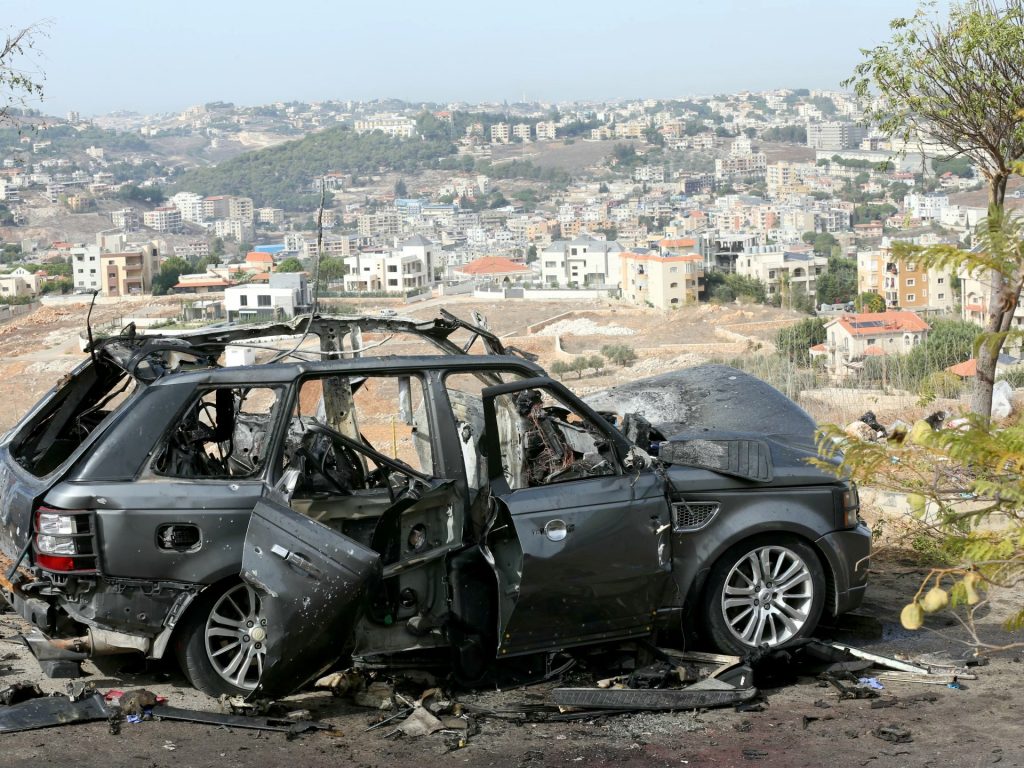
Beirut, Lebanon – An Israeli air strike on southern Lebanon has killed one person and wounded another, Lebanon’s Ministry of Public Health says, as Israel ramps up its cross-border attacks in defiance of a ceasefire. The ministry said in a statement on Wednesday that an “Israeli enemy raid” struck a car in the town of Burj Rahal in the southern district of Tyre. Recommended Stories list of 4 itemsend of list “The attack resulted in the martyrdom of one citizen and the injury of another,” the statement read, without identifying the dead. Lebanon’s National News Agency said the attack happened near a school, triggering panic among students and prompting parents to rush to collect their children amid scenes of fear and chaos. Ceasefire under strain The Israeli military did not immediately comment on the strike, which was the latest in a series of its attacks across southern Lebanon, despite a ceasefire signed on November 27, 2024. Israeli forces remain deployed in at least five areas of Lebanon’s south as they carry out near-daily air raids that Israel says target Hezbollah fighters and infrastructure. On Monday, two people were killed and seven wounded in separate attacks in southern Lebanon. A day earlier, Israeli raids in Nabatieh killed four people, according to Lebanon’s Health Ministry. Inside Lebanon, the continued bombardment has heightened fears of a renewed war, as Israeli and United States officials press the Lebanese government to force Hezbollah to disarm. Israeli military intelligence has claimed in recent days that Hezbollah is attempting to rebuild its military capabilities. A Hezbollah spokesperson denied reports of expanded military activity or attempts to restore its elite units. Advertisement “Israel fabricates stories and claims to justify its attacks,” the spokesperson told Lebanon’s L’Orient Today newspaper on Monday. Hezbollah was severely weakened after the Israeli escalation in September 2024, which killed its longtime leader, Hassan Nasrallah. Since the November ceasefire, the group has responded to Israeli attacks only once. Hezbollah officials have repeatedly said the group will not disarm, saying that relinquishing its weapons would leave southern Lebanon exposed to an Israeli invasion. Baalbek still under fire Nearly a year after Israel’s wide-scale bombing campaign across Lebanon, residents in the eastern Bekaa Valley say they are still living under persistent Israeli threats. In Baalbek, a city known for its Roman ruins and considered part of Hezbollah’s heartland, Israeli strikes continue to target what the Israeli military describes as Hezbollah’s “logistical and operational base”. But many civilians also remain under constant bombardment. “What is happening now isn’t short of a war. It is a war,” Abu Ali, a resident of Baalbek, told Al Jazeera. “There is so much talk about targeting Baalbek, and this is scaring people away,” added another resident, Ali Chokair. Much of the Bekaa region remains scarred by last year’s Israeli strikes, leaving one of Lebanon’s poorest areas struggling to rebuild. Lebanon under pressure to negotiate Israeli and US officials are pressing for Hezbollah’s disarmament, with US ambassador Tom Barrack urging the armed group to begin a dialogue with Israel. Israeli Prime Minister Benjamin Netanyahu warned on Sunday that the army would “act as necessary” if Lebanon failed to ensure Hezbollah handed over its weapons. “We expect the Lebanese government to fulfil its commitment – to disarm Hezbollah – but it is clear we will exercise our right of self-defence under the terms of the ceasefire,” he said. Lebanese President Joseph Aoun has said the country has “no choice but to negotiate” with Israel to avoid a wider conflict. But many in Baalbek and southern Lebanon oppose any talks that could lead to Hezbollah’s disarmament, Hussein Osman, who runs a restaurant in Baalbek, refused to flee when the Israeli army ordered residents to leave during last year’s war. Like many Hezbollah supporters, he questions Lebanon’s decision to negotiate with Israel, which is attacking the region almost every day. “We would support any negotiation that works for the benefit of the resistance,” he said. “But any negotiation that involves disarming the resistance is not accepted … These weapons protect us and allowed us to stay in our homes.” Advertisement Adblock test (Why?)
The Price of Truth
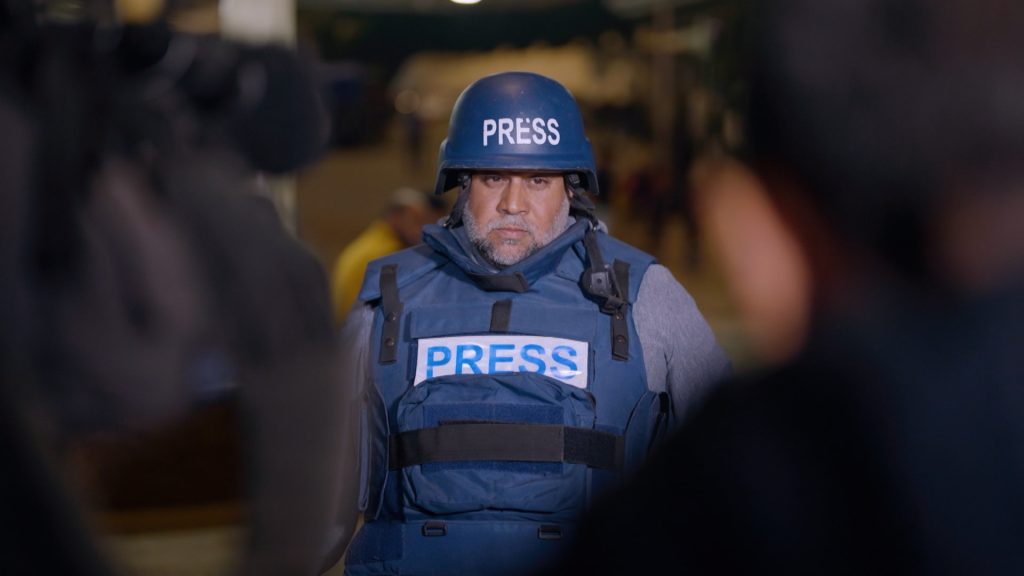
Al Jazeera’s journalists risk everything to report on Israel’s war on Gaza, enduring adversity, displacement, and the deaths of their colleagues and families. As Israel’s two-year war on Gaza has unfolded, Al Jazeera has told the story through its journalists on the ground, who’ve risked everything to bring the conflict to the world’s attention. This three-part series chronicles the network’s coverage and the personal toll on its staff, at least 10 of whom have been killed since the war began on October 7, 2023. It begins by following Gaza bureau chief Wael al-Dahdouh during the war’s first weeks as relentless bombing threatens his team and also claims the lives of his wife, children and grandson. The second episode moves south, following Al Jazeera’s Arabic and English correspondents as they report from tents amid the destruction, enduring further tragedy when al-Dahdouh’s son Hamza and cameraman Samer Abudaqa are killed. The final part covers the war’s later months when more colleagues, including Ismail al-Ghoul and Anas al-Sharif, are killed. The series stands as a tribute to their collective courage, resilience and sacrifice. Episode one: The first episode follows Al Jazeera’s journalists under fire in Gaza at the start of the war in October 2023. In Gaza City, Wael al-Dahdouh leads the network’s coverage through the relentless early weeks of Israel’s assault. As air strikes pound the area around their office, al-Dahdouh and his team work in constant danger, covering the devastation and civilian suffering while struggling to keep themselves and their families safe. Then tragedy strikes: al-Dahdouh’s wife, son, daughter and grandson are killed in an Israeli air strike. Despite these losses, he continues to report live from the rooftop of Al Jazeera’s office – until the danger becomes too great and he and his team are finally forced to flee and head south where they’ll be based for the coming weeks. Through al-Dahdouh’s story, the film captures the fear, chaos and heartbreak of the war – and the journalists’ determination to keep reporting on it, whatever the cost. Episode two (coming soon on 12 November): After the devastating opening months of Israel’s war on Gaza, the second episode shifts to southern Gaza. Here, Al Jazeera’s Arabic- and English-speaking correspondents and crews face increasing danger as they establish makeshift operations in tents amid the widespread destruction, turning temporary shelters into news centres. These include Al Jazeera English’s three main correspondents, Hani Mahmoud, Tareq Abu Azzoum and Hind Khoudary. The team suffers yet more personal tragedy when al-Dahdouh loses his son Hamza, killed in an Israeli air strike with Abudaqa while reporting on an Israeli attack. Correspondent Momin al-Alshrafi loses 22 members of his family in an air strike on the Jabalia refugee camp, and another correspondent, al-Ghoul, goes missing for 12 hours before re-establishing contact. Intimate footage and firsthand accounts show network journalists continuing to report under diabolical conditions, documenting the unfolding genocide with extraordinary courage. Episode three (coming soon on 19 November): The concluding episode chronicles the war’s final months before a ceasefire begins in October. Al Jazeera’s journalists continue their coverage despite the destruction caused by the relentless Israeli bombing, mounting casualties and intolerable working conditions across Gaza. Israel’s targeting of journalists becomes ever clearer as the violence claims more lives, including highly respected correspondents al-Ghoul and al-Sharif. The Israeli military also continues to attack medical facilities, including Nasser Hospital, where a Reuters cameraman is killed. Rescuers attending the scene and media covering the shooting are then hit in a second, follow-up attack, which kills Al Jazeera cameraman Mohammed Salama. These were not just personal tragedies but had all the appearance of systematic targeting of Al Jazeera staff covering the war and the genocide. This final film captures how the network’s teams battled on through grief, maintaining their professional standards and their mission amid the collective trauma. Published On 5 Nov 20255 Nov 2025 Click here to share on social media share2 Share Adblock test (Why?)
At least 11 killed in India train crash as rescuers recover bodies

NewsFeed At least 11 people were killed and dozens injured after a passenger train slammed into a cargo train near Bilaspur in India’s central Chhattisgarh state. Rescue teams worked through the night to pull victims from the wreckage before train services resumed on Wednesday. Published On 5 Nov 20255 Nov 2025 Click here to share on social media share2 Share Adblock test (Why?)

